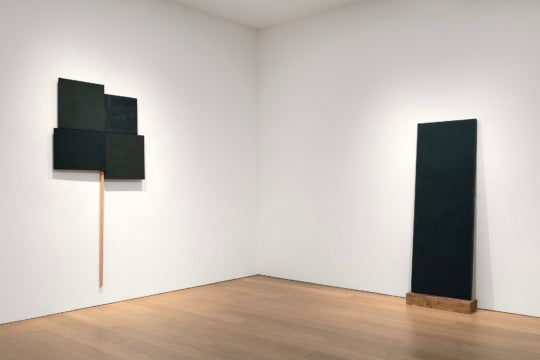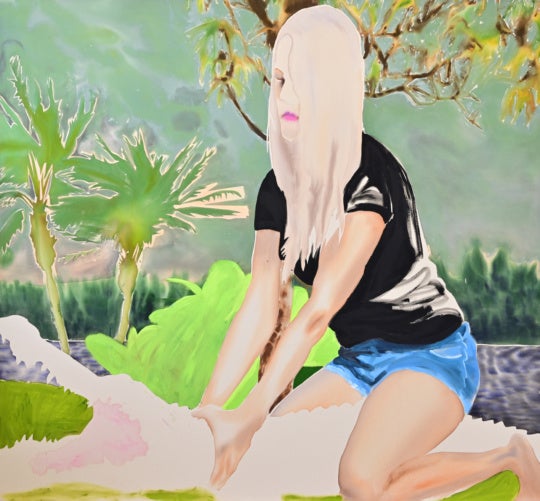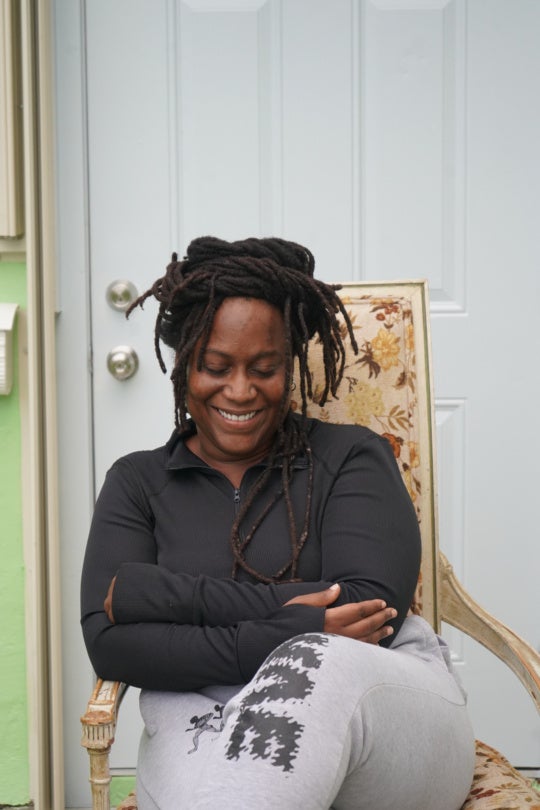
It took Amanda Ross-Ho two years to get from finishing up her M.F.A. at the University of Southern California in 2006 to being included in the Whitney Biennial and the California Biennial at the Orange County Museum of Art in 2008. She’s been on quite a roll ever since. Ross-Ho has since had solo shows at the Los Angeles Museum of Contemporary Art, the Museum of Contemporary Art in Chicago, and on Thursday, September 24, Ross-Ho will be speaking at Georgia State University as a Welch Visiting Artist, where she will give an overview of her 12-year career and discuss some of her recent projects.
Ross-Ho is one of seven artists, including Hank Willis Thomas, who have sculptures in New York’s City Hall Park as part of the Public Art Fund’s exhibition “Image Objects,” on view through November 20. In exhibition materials, associate curator Andria Hickey wrote: “as images are rendered into objects, and objects are circulated as images, the boundaries between the physical and the virtual are blurred, challenging us to rethink how we see the world around us.” Ross-Ho’s monumental sculpture is a new take on a work she displayed at the Museum of Contemporary Art, Chicago. The Character and Shape of Illuminated Things (Facial Recognition) now features a larger-than-life female mannequin head with a neon green square framing the face, mimicking the technology that Facebook uses to identify and tag people in photographs.
In an email interview, we asked Ross-Ho about her recent sculptures, the Internet, identity, and the L.A. art scene.

by the Public Art Fund.
What is the significance for you as an artist to create work for the public at large versus a more focused, intentional audience?
The opportunity to develop my two recent public works (Museum of Contemporary Art Chicago, Public Art Fund, New York City) allowed me to evolve existing interests within my practice in the vastly distinct context of the public sphere. Site specificity, scale, and the role of viewership as a material are things I have been investigating heavily in my studio-based practice for a very long time, but prior to these public projects, these ideas only manifested within the prosceniums of rarified exhibition spaces. To a large degree, the work is predicated on and informed by my ongoing relationship with these interior contexts. These spaces carry with them a set of expectations and are designated spaces of attention, which I directly respond to and perform within, often as subject of the work. I realized when embarking on the public works that with public art comes the expectation and to some degree, the necessity of scale—which created an entirely different set of challenges. I also became more acutely aware of how a viewer moves through public space—the social contract and the boundaries are completely different.
When I think about public art, I think about democracy and how the Internet has been able to expose art and ideas to a broader audience. How and why do you incorporate the Internet and technology into your work?
For some time, my work has drawn analogies between photography and the act of looking. Both of my recent public pieces engage these ideas on multiple levels. The pieces are based on a set of found photographs, originally produced for instructional purposes in the context of an amateur photography manual. I translated the props in the photographs into sculptural space, and the resulting works are self-conscious as photographic subjects. It was a natural fit that the photographic origins of the source would be aligned with the contemporary condition of human experience—which is now so hugely guided by the camera.
I am not particularly interested in positioning social media or web dissemination as the subject of these pieces, but I knew this would be a huge part of the context and reception of the work. So I incorporated it into the logic and accommodated the condition. The works predict your gaze, your lens. I’m interested in triggering awareness of one’s own viewership, and by extension, the parallels between how we look and consume through a lens.

What role does identity play in your current works?
Very little, I’d say. There are aspects of the work that certainly inform ideas of identity, but identity as a subject isn’t really interesting to me. I’m much more interested in asking broader and more universal questions, and examining where they overlap with local gestures. Autobiography comes into play in the work as a matter of convenience and as a context within which to suspend these bigger questions, but not to trigger nostalgia or in an effort to tell a personal story.
What has been inspirational to you over the past year?
I curated my first exhibition this year, a group show of 14 Los Angeles artists at Team Gallery in New York. This was an exciting and challenging project, as it really allowed me to immerse in and celebrate a set of practices and people that I have respected for a long time. I take a lot of street photographs, and I heavily document my immediate surroundings of home and studio. I troll the Internet and eBay and have found books. I steal language from spam emails, signage, junk mail. I take extensive notes. I make lists. I eavesdrop. These banal activities are incredibly generative for me.
We’ve recently talked to other artists who have moved from the South to Los Angeles. How has your location assisted or hindered your career?
I moved to L.A. from Chicago for graduate school in 2004. Drastically different than the Midwest, L.A. offered constant alienation and threat to my comfort zone—which I quickly realized fostered massive discovery and growth in both my life and my studio. It’s a city with multiple personalities, and this allows—no, demands—that you invent your life from the ground up as opposed to plugging into some existing collective organism. This isn’t something that would be motivating for everyone, but it provided the right chemistry for me to flourish. In more logistical terms, I’m a workaholic and this is simply a great place to work: space and resources are ample. Primarily because of the film industry and other industrial histories, I have access to materials, fabrication and production amenities that aren’t as accessible in other places. Also, because of its geographical sprawl and diverse, de-centered communities, L.A. offers opportunities for privacy and psychological space within an urban environment. I love it.
Amanda Ross-Ho will speak at Georgia State University’s Troy Moore Library, 23rd Floor, on September 24 at 5pm.
Jennifer Jefferson is a freelance writer living in Atlanta.




